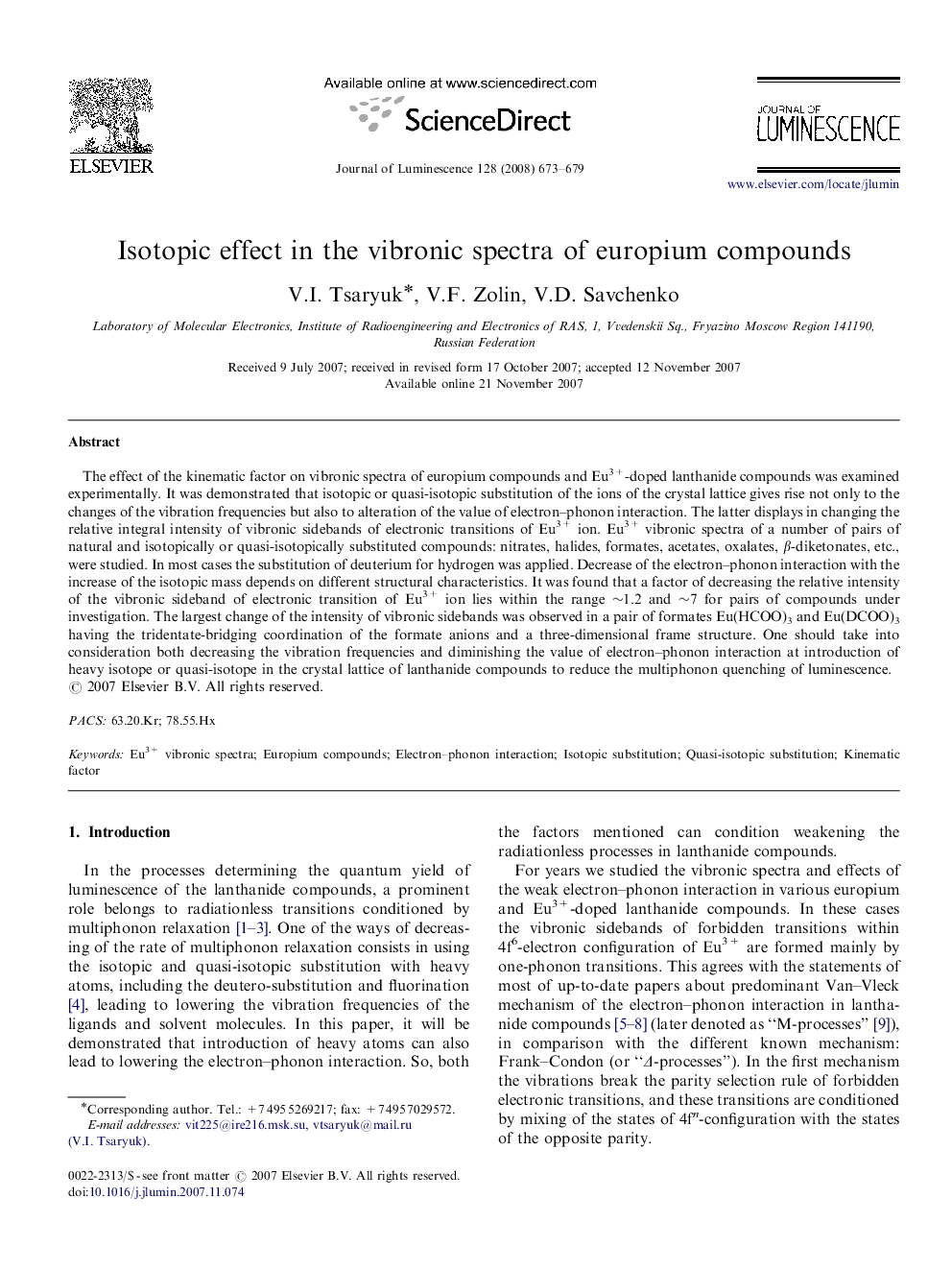| Article ID | Journal | Published Year | Pages | File Type |
|---|---|---|---|---|
| 5403754 | Journal of Luminescence | 2008 | 7 Pages |
Abstract
The effect of the kinematic factor on vibronic spectra of europium compounds and Eu3+-doped lanthanide compounds was examined experimentally. It was demonstrated that isotopic or quasi-isotopic substitution of the ions of the crystal lattice gives rise not only to the changes of the vibration frequencies but also to alteration of the value of electron-phonon interaction. The latter displays in changing the relative integral intensity of vibronic sidebands of electronic transitions of Eu3+ ion. Eu3+ vibronic spectra of a number of pairs of natural and isotopically or quasi-isotopically substituted compounds: nitrates, halides, formates, acetates, oxalates, β-diketonates, etc., were studied. In most cases the substitution of deuterium for hydrogen was applied. Decrease of the electron-phonon interaction with the increase of the isotopic mass depends on different structural characteristics. It was found that a factor of decreasing the relative intensity of the vibronic sideband of electronic transition of Eu3+ ion lies within the range â¼1.2 and â¼7 for pairs of compounds under investigation. The largest change of the intensity of vibronic sidebands was observed in a pair of formates Eu(HCOO)3 and Eu(DCOO)3 having the tridentate-bridging coordination of the formate anions and a three-dimensional frame structure. One should take into consideration both decreasing the vibration frequencies and diminishing the value of electron-phonon interaction at introduction of heavy isotope or quasi-isotope in the crystal lattice of lanthanide compounds to reduce the multiphonon quenching of luminescence.
Related Topics
Physical Sciences and Engineering
Chemistry
Physical and Theoretical Chemistry
Authors
V.I. Tsaryuk, V.F. Zolin, V.D. Savchenko,
